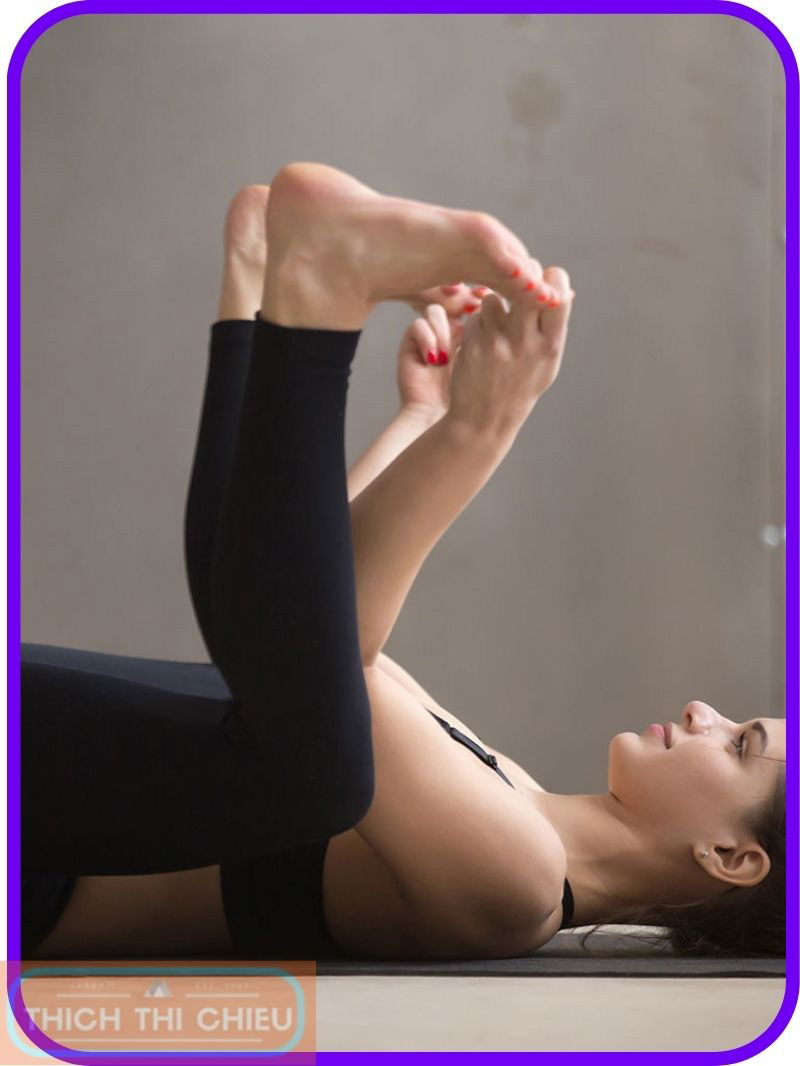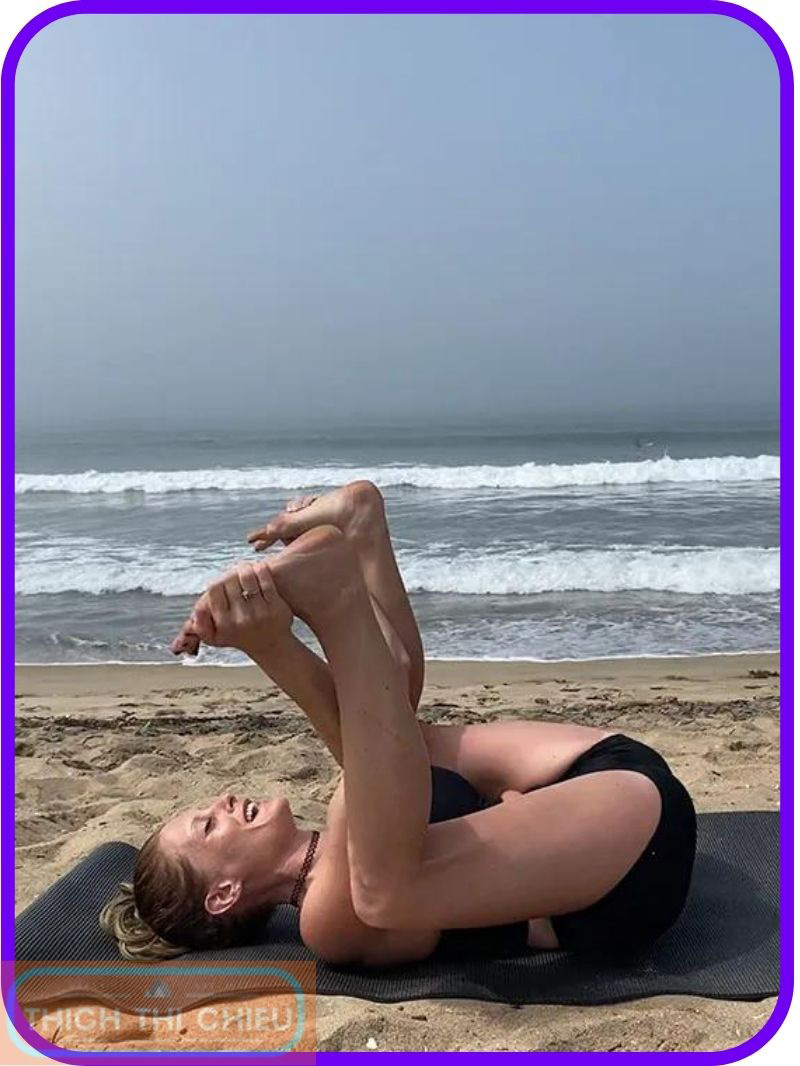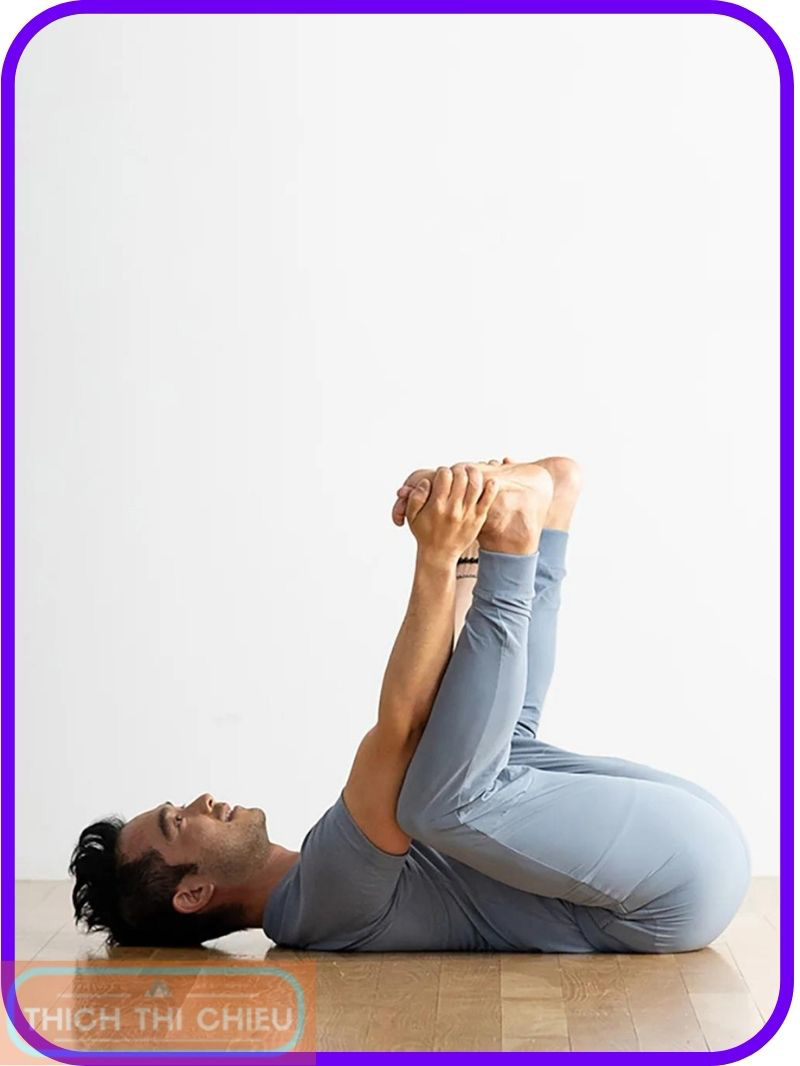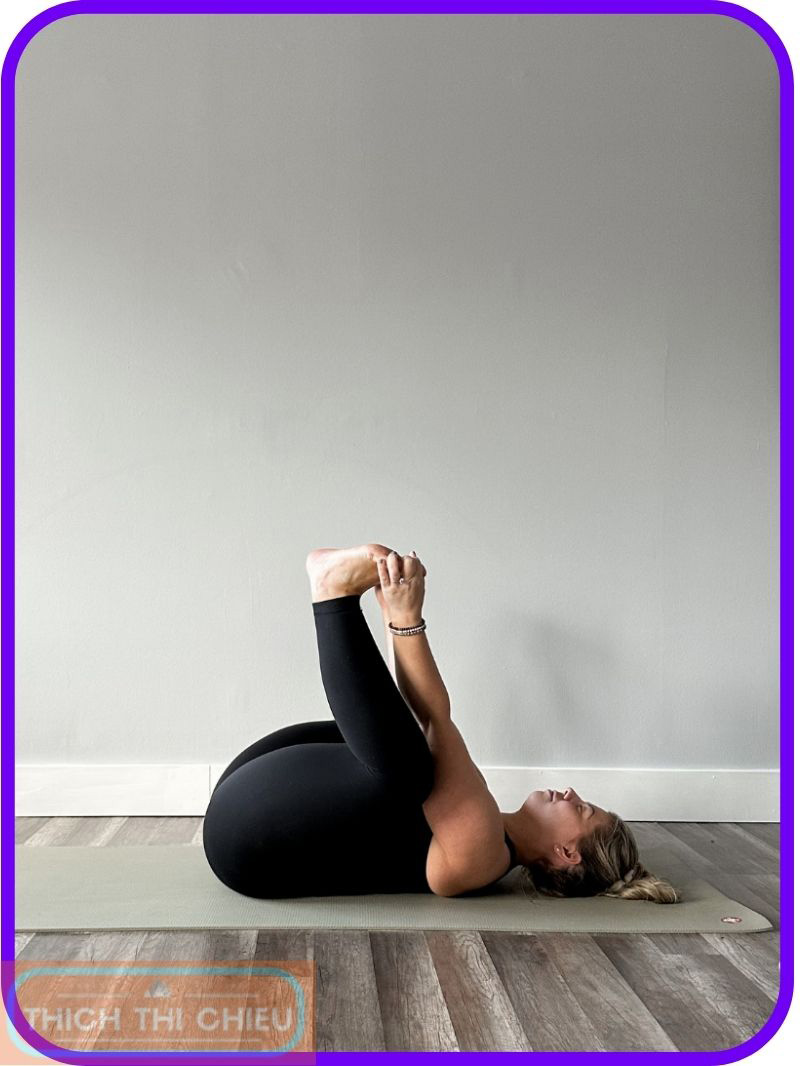Ananda Balasana, also known as Happy Baby Pose, is a gentle yet effective yoga pose that can help you to release stress, improve flexibility, and cultivate a sense of inner peace.
What is Ananda Balasana?

Ananda Balasana is a reclining pose that involves bringing your knees towards your chest and looping your first two fingers around your big toes. This pose is known for its ability to stretch the inner thighs, groin, and lower back, as well as to massage the abdominal organs.
Preparation for Ananda Balasana

Choosing the Right Environment
The first step in preparing for Ananda Balasana is to choose a quiet, spacious area free from distractions. This will help you to relax and focus on the pose. The ideal setting for Ananda Balasana is a quiet room with a comfortable temperature. If possible, try to practice in a room with natural light.
Using a Comfortable Yoga Mat
A comfortable yoga mat is essential for supporting your body during Ananda Balasana. The mat should be thick enough to provide cushioning for your joints and back. It should also be long enough so that you can fully extend your legs without feeling cramped.
Addressing Lower Back or Hamstring Discomfort
If you experience any discomfort in your lower back or hamstrings during Ananda Balasana, you can use a folded blanket or towel for support. Simply place the blanket or towel under your lower back or hamstrings, whichever area is feeling tight. This will help to take the pressure off of your joints and muscles and allow you to relax more deeply into the pose.
In addition to creating a conducive environment, there are a few other things you can do to prepare for Ananda Balasana:
- Warm up your body with a few gentle yoga poses. This will help to loosen your muscles and prevent injury.
- Wear loose-fitting, comfortable clothing.
- Do not eat a large meal before practicing Ananda Balasana.
- Listen to your body and stop the pose if you feel any pain.
Step-by-Step Guide to Ananda Balasana
- Reclining Posture: Begin by lying flat on your back with your arms relaxed at your sides, palms facing upwards. Extend your legs straight up towards the ceiling, grounding your hip bones into the mat
- Bringing the Knees In: With an inhalation, gently draw your knees towards your chest, keeping your thighs perpendicular to the floor. Your feet should naturally fall apart, soles facing the ceiling
- Grasping the Big Toes: Reach your hands towards your feet, looping your first two fingers around your big toes. Maintain a gentle grip, allowing your knees to release towards your chest
- Deepening the Stretch: As you exhale, gently pull on your big toes, encouraging your knees to move closer to your chest and your thighs to press towards your abdomen. Maintain a neutral spine, ensuring your lower back remains grounded
- Relaxing into the Pose: Surrender into the pose, allowing your body to soften and release any tension. Breathe deeply and evenly, feeling the stretch in your inner thighs, groin, and lower back
- Optional Rocking Movement: For added relaxation and gentle massage of the abdominal organs, gently rock your body from side to side while maintaining the pose.
Tips for Beginners
- If you cannot reach your big toes, loop a yoga strap around the soles of your feet.
- If you experience discomfort in your lower back, place a folded blanket or towel under your lower back for support.
- Do not force the pose. If you feel any pain, stop the pose and come out.
- Listen to your body and respect its limits.
Benefits of Ananda Balasana
Enhanced Flexibility
Ananda Balasana effectively stretches the inner thighs, groin, and lower back, improving flexibility and range of motion in these areas. The gentle pulling of the big toes during the pose further enhances the stretch, releasing tension and promoting a sense of openness in the lower body.
Stress Reduction and Relaxation
The calming nature of Ananda Balasana promotes a sense of relaxation and stress reduction. The gentle massage of the abdominal organs during the pose stimulates the parasympathetic nervous system, responsible for the body’s “rest and digest” response, effectively counteracting the stress-induced “fight or flight” response. This, in turn, reduces cortisol levels, the primary stress hormone, and promotes feelings of calmness and well-being.
Improved Digestion
The gentle pressure of Ananda Balasana on the abdominal organs can help to improve digestion and relieve constipation. The pose stimulates the peristalsis, the rhythmic contractions of the intestinal muscles that move food through the digestive tract. This stimulation can help to alleviate digestive issues and promote a healthy gut microbiome.
Pain Relief
The pose’s ability to release tension and improve flexibility can alleviate lower back pain and discomfort. By stretching the tight muscles and ligaments in the lower back, Ananda Balasana can help to reduce inflammation and improve circulation in the area, providing pain relief and promoting overall spinal health.
Enhanced Sleep
The calming and stress-reducing effects of Ananda Balasana can contribute to improved sleep quality. The pose’s ability to promote relaxation and release tension can help to ease the mind and body into a state of deep rest, improving sleep patterns and reducing sleep disturbances.
Variations of Ananda Balasana
Ananda Balasana, also known as Happy Baby Pose, is a versatile yoga pose that can be modified to accommodate individual needs and preferences. By exploring variations of the pose, you can enhance your practice, deepen the stretch, and cater to specific areas of your body that may require attention.
Supported Ananda Balasana
If you experience discomfort in your lower back during Ananda Balasana, placing a folded blanket or towel under your lower back can provide support and reduce strain. This variation allows you to fully enjoy the benefits of the pose without experiencing undue pressure on your lower back.
Instructions:
- Lie flat on your back with your arms relaxed at your sides, palms facing upwards.
- Bend your knees and bring them towards your chest, keeping your thighs perpendicular to the floor.
- Loop your first two fingers around your big toes.
- Place a folded blanket or towel lengthwise under your lower back, ensuring it supports your natural lumbar curve.
- Gently rock your body from side to side, allowing the blanket to provide support and alleviate lower back pressure.
Bound Angle Pose Variation
For those seeking a deeper stretch in the inner thighs and groin, the Bound Angle Pose Variation offers an effective modification. By using a yoga strap to bind the soles of your feet, you can intensify the stretch and enhance flexibility in these areas.
Instructions:
- Lie flat on your back with your arms relaxed at your sides, palms facing upwards.
- Bend your knees and bring them towards your chest, keeping your thighs perpendicular to the floor.
- Loop a yoga strap around the soles of your feet, ensuring it is comfortable and secure.
- Gently pull on the strap, drawing your feet closer towards your body and deepening the stretch in your inner thighs and groin.
- Maintain a neutral spine and allow your body to relax into the pose.
Active Ananda Balasana
Incorporating a dynamic element into Ananda Balasana can enhance flexibility and circulation, adding a new dimension to the pose. Actively rocking your body from side to side while maintaining the pose stimulates blood flow and promotes a sense of energizing release.
Instructions:
- Lie flat on your back with your arms relaxed at your sides, palms facing upwards.
- Bend your knees and bring them towards your chest, keeping your thighs perpendicular to the floor.
- Loop your first two fingers around your big toes.
- Begin to gently rock your body from side to side, maintaining a steady rhythm and controlled movement.
- Allow the rocking motion to massage your abdominal organs and stimulate circulation throughout your body.
- Breathe deeply and evenly, enjoying the dynamic aspect of the pose.
Ananda Balasana is a safe and effective pose for people of all ages and levels of experience. It is a great way to release stress, improve flexibility, and cultivate a sense of inner peace. Hopefully, the above article of TTC has provided you with useful information. If you have any questions or concerns, please leave a comment below.







Leave a Reply